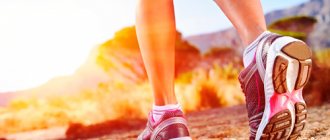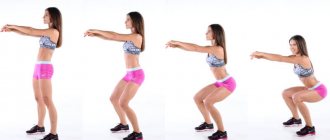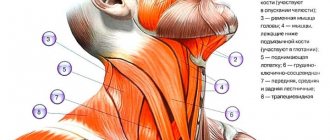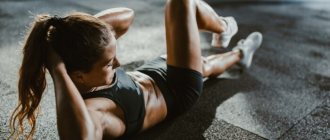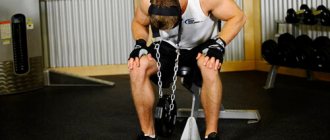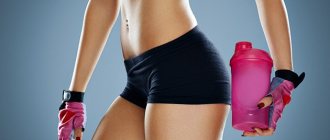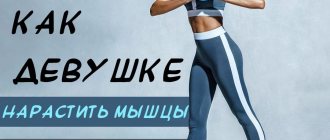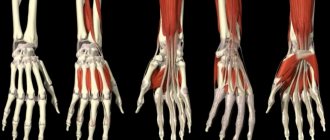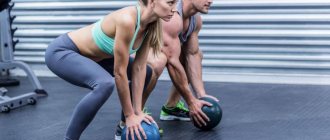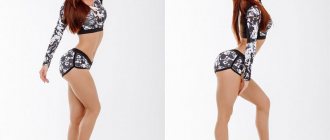The calf muscles grow slowly and are difficult to pump well. But most men and women strive to make their calves sculpted and strong. This is important not only for appearance, but also for endurance during physical activity.
There are special exercises for working this area that are recommended to be performed in the gym. For those who are unable to attend, universal classes at home are suitable. With regular training, this approach is as effective as a professional one, and the minimum equipment and required time to get quick results gives it a significant advantage.
- Step platform
A little anatomy
First, let's get acquainted with the structure of the lower leg. The lion's share of it is occupied by the gastrocnemius muscle, consisting of two heads - medial and lateral. It is their development that gives the main volume of the lower leg. Below the gastrocnemius is the soleus muscle - it is flat but wide, so its development can add width, both in side view and in frontal positions.
An important difference between the gastrocnemius and the soleus is that the former crosses the knee joint and is attached to the femur, while the soleus does not cross the knee joint and is inserted within the tibia. This means that the calf muscle is maximally activated in a standing position, but is virtually inactive when the leg is bent at a 90-degree angle. At these moments, the soleus muscle takes over the baton.
From this anatomical structure of the lower leg follow the specifics of training the gastrocnemius and soleus muscles - the gastrocnemius is trained in a standing position, and the soleus in a sitting position, but more on that later.
In addition to the triceps surae, the extensor digitorum, peroneus longus, and tibialis anterior muscles are also present on the anterior surface. To directly train them, you need a special simulator, which is so rare in gyms that you can forget about it. If you have such a machine in your training room, I strongly recommend using it more often.
What determines the volume of calves?
The shape and thickness of the calves is determined by the triceps surae muscle. It, in turn, is divided. M. F. Ivanitsky. Human anatomy 2. K. Albracht, A. Arampatzis, V. Baltzopoulos. Assessment of muscle volume and physiological cross‑sectional area of the human triceps surae muscle in vivo / Journal of biomechanics on the gastrocnemius (38%) and soleus (62%) muscles.
Frame: Kenhub – Learn Human Anatomy / YouTube
The gastrocnemius muscle lies superficially and can be easily felt under the skin, has two heads and is responsible for flexing the foot and knee.
The soleus is located deeper and lower, bends only one joint - the ankle, but is responsible for A. G. Cresswell, W. N. Löscher, A. Thorstensson. Influence of gastrocnemius muscle length on triceps surae torque development and electromyographic activity in man / Experimental brain research for 60% of the strength of this movement.
The calf muscles tense when you stand: they fix the lower leg and prevent the body from falling forward. They also work all the time while walking and any other movements in which you need to bend the ankle joint.
Because the calves have to be constantly strained, they are extremely resilient - and it is this feature that can interfere with pumping.
Exercises for the calf muscles
We already know that the calf muscles are most active when a person is in a standing position and his legs are straight. This leads to the main condition for training the calf muscles – straight legs in a standing position.
Standing calf raises
The most popular and, so to speak, basic calf exercise is standing calf raises . For this exercise, both a special machine and a Smith machine are suitable.
You can use a sock holder or not, but I recommend using it. The height of the stand should be such that at the lowest point the heels never touch the floor. It is not necessary to specifically go as low as possible; a slight stretch at the bottom point is quite enough. The stand allows you to increase the range of motion, which is very small in lower leg exercises.
The legs at the knee joint can be either absolutely straight or slightly bent. You should keep your back straight; you should not push your pelvis too far back. In general, the bar on your shoulders should be in line with your toes.
Standing calf raises can also be done with dumbbells. In this embodiment, you need to hold onto a support with one hand to maintain balance, and hold a dumbbell in the other. Each shin is worked alternately.
Bent-over calf raises (“donkey”)
An interesting and effective exercise is standing calf raises or the so-called “donkey”. To perform this exercise, you need to tilt your body forward, leaving your legs straight. A significant disadvantage of this exercise is that the load on the calves is not great enough and there is nothing left to do but put a partner on your back and lift with him. But even with a partner, the load may not be enough. Therefore, a great substitute for this exercise would be the toe press on a leg press machine. The advantages are obvious - there is no load on the back and wide adjustment of the degree of load. Such machines are available in almost every fitness club.
Help and advice from experts
K. Ilkevich, fitness expert, personal bodybuilding trainer
The calf muscles are the most difficult to develop for 2 reasons: improper selection of training exercises and a passive lifestyle.
The best option for working your calves would be 1-2 sessions per week before your main workout. Use an average of 3 calf ligaments in 3 sets. He often advises combining different execution speeds until muscle failure. This workout will allow you to achieve maximum muscle growth without feeling overtrained.
V. Berlichev, professional bodybuilder, personal trainer
A large number of athletes pay very little attention to the development of the calf muscles. Therefore, quite often, even among athletes, we can observe disproportionate figures: the torso and arms look quite powerful, but the legs seem too thin and thin. The biggest mistake is the habit of leaving pumping your calves until the end of the workout - at this time the body will get tired, and you simply will not be able to work out your shins efficiently and slowly. For this reason, I always recommend loading your calves early in your workout.
L. Ulyanicheva, sports expert, professional fitness trainer
Girls should not be afraid to pay attention to the soleus muscles. With regular exercise, your legs will not become pumped up, but will look toned. One of the simplest exercises can be called seated leg raises. Use additional weight, doing at least 15 repetitions. Calves recover quite quickly, so reasonable weights will benefit them.
Exercises for the soleus muscle
To load these muscles, you need to bend your leg at the knee joint 90 degrees and rise on your toes. A special simulator is used for these purposes, but if it is not available, then the same Smith simulator will do. If you don't have one, you can use free weights, but you may need a safety partner. It is necessary to load the barbell with weights in advance, sit on the edge of the bench, place your toes on the stand and place the barbell on top of your thighs, closer to your knees. Most likely, heavy weight will cause discomfort in the hips, so I recommend placing a towel or weightlifting belt under the barbell. You can do it easier - place a dumbbell on the upper thigh, butt down. You can work both legs at the same time, or alternately.
Features of lower leg training
On the Internet you can find information that supposedly the calf muscles are very durable, consist of “slow” fibers and they need to be trained exclusively with many repetitions with light weight, and large weights are useless here. Actually this is not true. The lower leg is both a resilient and strong muscle group.
Yes, most people's calves are made up primarily of slow-twitch fibers, but that doesn't mean they should only be trained in a high-rep style. If the shin is sharpened for many repetitions in everyday life, then why load it in the same style in the gym? Why can’t you use the opposite type of stress – heavy weights? Of course, this can and should be done.
When using heavy weights, you need to remember that the spine, ankle and Achilles tendon will experience a much greater load than when working with small weights, especially when standing. With heavy weights, it is not recommended to lower yourself too much at the bottom of the exercise, as this can lead to injury.
Seated calf raises avoid excessive stress on the spine, but you still need to be careful with the ankle. In seated lifts, you can work with heavier weights more often, the main thing is that the movements are smooth and controlled.
You can load the lower leg relatively more often than other muscle groups, although in this case everything depends on the volume of the load. It is perfectly acceptable to work your lower legs three times a week if you only used one exercise in each workout. For example, if on Monday it was standing calf raises, then on Wednesday you can perform seated calf raises, and on Friday calf presses. All 4-5 approaches, the number of repetitions can also be varied. For example, calf raises can be done for 8 reps, and standing raises and calf presses can be done for 12-15 reps.
If the shin lags behind, then there is nothing left but eternal specialization on them. This means that at the beginning of your workout you should hit your calves for 4-5 sets of 1-2 exercises, and only then move on to the main workout. Here you will have to choose - either load them powerfully and harshly, or moderately, but more often. I recommend the second option as a basic one. If you really want hardcore, then you can use drop sets. After a good warm-up, you load a machine or barbell with a heavy weight that can be lifted 8-10 times, perform a set to failure, quickly drop the weight by 25% of the original, do another set for the maximum number of repetitions, then drop the weight again by 25% and again do as many reps as you can. This all adds up to one approach. I recommend doing no more than 3-4 such approaches during a workout.
Is it really difficult to pump up calves?
Triceps surae consists of B. J. Schoenfeld, A.D. Vigotsky, J. Grgic. Do the anatomical and physiological properties of a muscle determine its adaptive response to different loading protocols? / Physiological reports mainly from white muscle fibers of the first type, which contract slowly, but can withstand prolonged loads.
To increase the size of your calves, you first need to properly fatigue them, and this is not so easy to do with such durable muscles. In one study, T. C. Chen, Tsung‑Jen Yang 1, Min‑Jyue Huang Damage and the repeated bout effect of arm, leg, and trunk muscles induced by eccentric resistance exercises / Scandinavian journal of medicine and science in sports found that the triceps calf is the least damaged other muscles with the exception of the quadriceps, and recovers faster.
Thus, you will have to work hard to properly load your calves and provide them with the necessary stimulus for growth.
Interesting trick
There is another interesting training technique that will help you “break through” a stubborn shin. This is a rest-pause. Personally, I use this technique as the last set of the calf exercise. After completing 4 sets of 10 reps, I step off the stand, rest for 15 seconds, then get back on the stand and do a few reps, usually about seven. Then I rest again for 15 seconds and repeat everything again until the number of repetitions drops to three. Since the lower leg is a very durable muscle group, the number of such approaches will be quite large. I need 6-7 sets to get the number of reps down from seven to three. After such an execution, the shin feels pleasantly sore for several days.
Contraindications for surgery
The lipofilling operation has some contraindications: diseases of the nervous system, AIDS, serious metabolic disorders (in the stage of decompensation), malignant neoplasms, varicose veins of 2-3 degrees.
If you don’t know how to make your legs more beautiful, we inform you that today, lipofilling of the legs is one of the most optimal, and most importantly safe, methods for correcting crooked legs.
All women who have undergone lipofilling of the legs claim that after the operation their lives have completely changed, as they have gained confidence in their beauty and can freely wear short dresses and skirts, showing off their ideal legs.
If you still have questions after reading the article, call the clinic and 8 (921) 99-22-335 for consultation.
